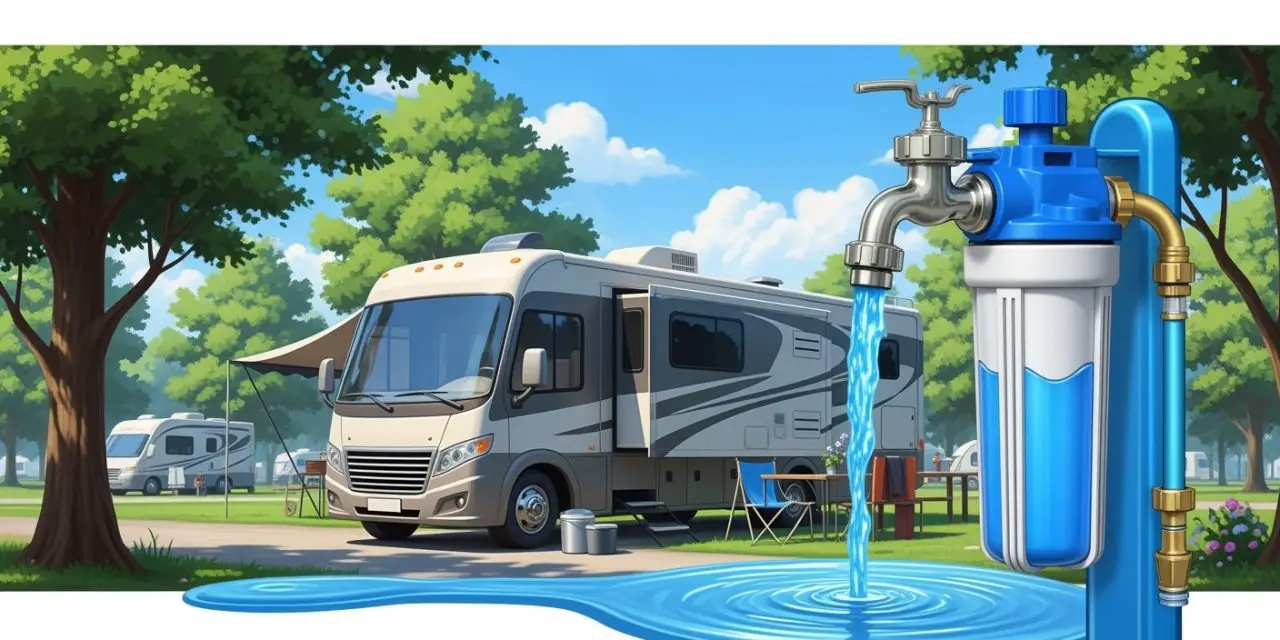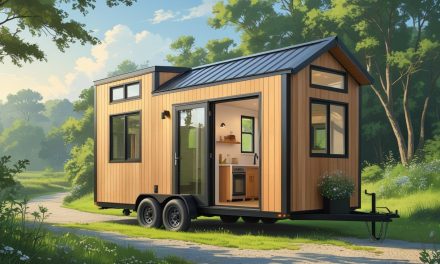Would you like to save this article?
Your RV’s water system could be harboring a silent killer right now, and you might never see it coming. Just recently, a 71-year-old Texas woman died from a brain-eating amoeba after using her RV’s tap water for a simple sinus rinse at a campground. This tragic incident serves as a wake-up call for every RVer on the road today.
Water contamination in recreational vehicles is far more common and dangerous than most people realize. When you’re living or traveling in your RV, you’re essentially responsible for your own water treatment plant on wheels.
The stakes couldn’t be higher – contaminated water can lead to serious illness, hospitalization, and in rare cases, death. Understanding these critical water safety mistakes and knowing how to prevent them isn’t just good maintenance advice – it’s literally a matter of life and death.
1. Never Sanitizing Your Freshwater Tank
Most RVers treat their freshwater tanks like they’re permanently clean – this is a potentially fatal mistake. Your freshwater tank sits in a dark, enclosed, often warm environment underneath your RV. These are literally the perfect conditions for bacterial growth, biofilm development, and dangerous microorganism proliferation.
The Hidden Dangers Lurking in Your Tank
| Contaminant Type | Health Risk | Symptoms |
|---|---|---|
| Bacteria (E. coli, Salmonella) | Severe gastroenteritis | Vomiting, diarrhea, fever |
| Biofilm buildup | Chronic infections | Stomach issues, allergic reactions |
| Amoebas | Brain infection (fatal) | Headache, fever, death within days |
| Mold/Algae | Respiratory problems | Coughing, breathing difficulties |
According to the CDC, RV makers recommend sanitizing your freshwater tank at least once every year, but if you’re a frequent user or full-timer, you should be doing this 3-4 times annually. The standard bleach method requires ¼ cup of unscented household bleach per 15 gallons of tank capacity.
Here’s what you probably didn’t think about: Even if you never drink directly from your freshwater tank, you’re still using that water to brush your teeth, wash dishes, and rinse food. That’s plenty of exposure to make you seriously sick.
2. Using Regular Garden Hoses Instead of Drinking Water Hoses
You wouldn’t drink from a garden hose that’s been sitting in the sun, so why would you fill your RV’s freshwater system with one? This is one of the most common and dangerous mistakes RVers make without even realizing it.
Why Garden Hoses Are Toxic Time Bombs
Regular garden hoses contain a cocktail of harmful chemicals that can leach into your water supply:
- Lead – Causes neurological damage and developmental issues
- BPA (Bisphenol A) – Disrupts hormones and affects reproduction
- Phthalates – Linked to cancer and organ damage
- PVC plasticizers – Toxic compounds that accumulate in your body
Studies show that water sitting in a regular garden hose for just one hour can contain lead levels 18 times higher than what’s considered safe for drinking water.
What makes this even more dangerous is that you can’t taste, smell, or see these contaminants. Your water might look perfectly clear while slowly poisoning you with every sip.
3. Ignoring Water Filtration Systems
Thinking that municipal water or campground water is automatically safe is like playing Russian roulette with your health. Even properly treated municipal water can pick up contaminants as it travels through aging pipes, sits in storage tanks, or gets exposed to environmental pollutants.
The Shocking Truth About “Safe” Water Sources
| Water Source | Common Contaminants | Risk Level |
|---|---|---|
| Campground spigots | Bacteria, sediment, chlorine | Medium-High |
| Municipal hookups | Heavy metals, chemicals | Medium |
| Well water | Bacteria, nitrates, minerals | High |
| Untreated sources | Parasites, viruses, toxins | Extreme |
Professional RV water filtration systems can remove up to 99.9% of harmful contaminants, including bacteria, viruses, heavy metals, and chemical pollutants. At minimum, you should be using an inline filter, but multi-stage systems provide exponentially better protection.
Here’s the reality check you need: A quality water filtration system costs less than a single emergency room visit for waterborne illness. You’re literally gambling your family’s health to save a few hundred dollars.
4. Storing Water for Extended Periods Without Treatment
That water sitting in your tank for weeks or months isn’t aging like fine wine – it’s becoming a biological weapon. Water that sits stagnant in your RV’s system creates the perfect breeding ground for dangerous microorganisms.
The Dangerous Timeline of Stagnant Water
- Week 1-2: Chlorine dissipates, bacterial growth begins
- Week 3-4: Biofilm formation starts on tank walls
- Month 2+: Serious contamination, potential health hazards
- Month 3+: Dangerous pathogen levels, system damage
The CDC specifically warns that stagnant water in RV systems can harbor brain-eating amoebas, the same organism that killed the Texas woman mentioned earlier. These microscopic killers thrive in warm, stagnant water and are nearly 100% fatal once they enter through your nasal passages.
You might think you’re being water-conscious by conserving what’s in your tank, but you’re actually creating a petri dish that could kill you. Fresh water should be cycled through your system regularly, and tanks should never sit full for more than a few weeks without treatment.
5. Skipping Water Quality Testing
Assuming your water is safe without testing it is like driving blindfolded – you might be fine for a while, but disaster is inevitable. Many RVers never test their water quality, relying instead on how it looks, tastes, or smells. This is catastrophically dangerous because many of the most harmful contaminants are completely undetectable to your senses.
Essential Water Tests Every RVer Needs
| Test Type | What It Detects | Frequency |
|---|---|---|
| Bacteria test | E. coli, coliform, pathogens | Monthly |
| Heavy metals | Lead, mercury, arsenic | Quarterly |
| Chemical analysis | Pesticides, industrial pollutants | Bi-annually |
| pH/TDS testing | Acidity, dissolved solids | Weekly |
Professional water testing kits cost less than $50 and can literally save your life. These tests can detect invisible threats like bacteria, heavy metals, and chemical contaminants that could cause serious illness or death.
The scariest part? Many RVers only discover their water is contaminated after someone gets sick. By then, the damage is already done. Regular testing is your early warning system against waterborne disasters.
SOURCES
- CDC Report on RV Water Safety
- NBC DFW – Texas Woman Dies from RV Water Contamination
- CDC Safe RV Water Guidelines (PDF)
- RV Travel – Brain-Eating Amoeba Death
- CDC Water Treatment Guidelines
- Grateful Glamper YouTube Channel
- KleenTank RV Water System Maintenance





